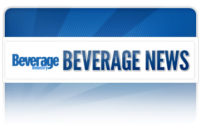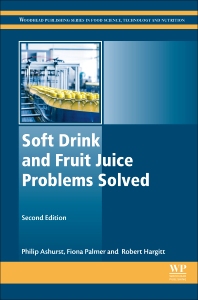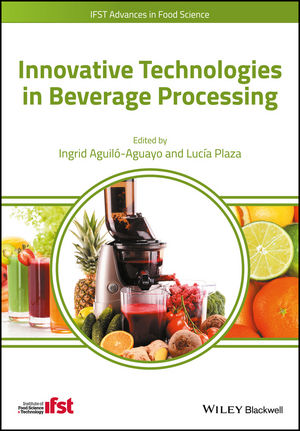Organic Picks Up Steam In Juice Segment
By ELIZABETH BREWSTER
As low-calorie and
functional products drew less of a crowd, the
juice segment has seen a surge of interest in organic label claims during
the past year, report industry experts.
“Since 2003, there’s been a pretty steady
march forward for organic-type product claims [in juice beverages],”
says Tom Vierhile, director of Productscan Online, Naples, N.Y.
“Organic claims were up 17.3 percent in 2005, up from 13.7 percent in
2004, and 8.5 percent in 2003… We’re definitely seeing more
interest from the bigger food manufacturers toward organics.”
In fact, major player Ocean Spray, based in
Lakeville-Middleboro, Mass., jumped on the organic bandwagon last fall with
three Organic 100 percent Juice Blends: Cranberry, Cranberry Blueberry and
Cranberry Raspberry. All three are certified USDA Organic and carry the
organic seal.
Meanwhile, juice products claiming to be low in
calories or to have no calories at all have seen a decline in the past
year, primarily because many companies were chasing the low-carb fad, which
has peaked, Vierhile adds. “We’re seeing a similar situation
happen with low-sugar and no-sugar type product claims — those are
both down, too,” he says.
Another waning trend is
juices that claim to be high in certain nutrients, a trend that
“actually peaked in 2003 for juices and juice drinks,” Vierhile
says. Ninety-three products made such claims in 2005, he explains, compared
with 101 in 2004.
| Refrigerated orange juice sales by brand | ||||
| Brand | Dollar Sales (IN MILLIONS) | % Change Vs. Prior Year | Market Share | |
| Tropicana Pure Premium | $1,123 | -4.8% | 43.2% | |
| Private label | 414 | +1.4% | 15.9% | |
| Minute Maid Premium | 394 | -3.5% | 15.2% | |
| Florida’s Natural | 249 | +6.6% | 9.6% | |
| Simply Orange | 168 | +10.9% | 6.5% | |
| Minute Maid Premium Heart Wise | 28 | +38.9% | 1.1% | |
| Minute Maid Premium for Kids | 18 | +12.8% | 0.7% | |
| Citrus World Donald Duck | 16 | -10.9% | 0.6% | |
| Odwalla | 11 | +9.7% | 0.4% | |
| Dole | 11 | -26.3% | 0.4% | |
| Source: Information Resources Inc. Total food, drug and mass merchandise, excluding Wal-Mart for the 52 weeks ending Nov. 27, 2005. | ||||
One notable exception, however, was Mott’s Plus
for Kids’ Health, a new line of fortified apple juices that rolled
out last spring. “Mott’s Plus for Kids’ Health is a juice
with more flavor, more essential nutrients, more kid appeal and more
versatility,” says Liz Weiss, a nutrition consultant for Rye Brook,
N.Y.-based Mott’s. “And since a glass counts as a fruit
serving, it brings children one step closer to meeting their daily fruit
serving goals.”
Mott’s Plus for Kids’ Health is fortified
with 100 percent of the recommended daily allowance of vitamin C, 10
percent vitamin of A, and 10 percent of calcium. The 100 percent juice
product is available in Apple Grape and Apple Punch flavors.
Juices that naturally boast a wealth of nutrients,
such as pomegranate and newcomer acai, are riding a newfound wave of
popularity, Vierhile says.
“[Acai] is a hot thing, a rainforest berry from
Brazil, with a very high antioxidant content,” he says. “It has followed in the footsteps of POM
Wonderful [pomegranate juice], which proved there is a market for high-end
fruit drinks.”
One of the newest acai products is Los Angeles-based
Bossa Nova Beverage Group’s Acai Juice in Original, Mango and
Passionfruit flavors. The refrigerated line of 10-ounce bottles is lightly
sweetened with organic agave and contains 70 percent of the RDA for vitamin
A and 170 percent of the RDA for vitamin C.
| Refrigerated juice sales by variety | ||
| Brand | Dollar Sales (IN MILLIONS) | % Change Vs. Prior Year |
| Apple juice | $8.4 | -0.2% |
| Blended fruit juice | 210 | 0% |
| Cider | 46 | + 6.3% |
| Cocktail mixes | 0.148 | -3.0% |
| Cranberry cocktail/drink | 3.7 | -30.8% |
| Cranberry juice/cranberry juice blend | 1.2 | -5.2% |
| Fruit drink | 687 | +8.3% |
| Fruit nectar | 14.8 | -9.0% |
| Grape juice | 1.9 | +61.6% |
| Grapefruit cocktail/drink | 0.960 | +129.7% |
| Source: Information Resources Inc. Total food, drug and mass merchandise, excluding Wal-Mart for the 52 weeks ending Nov. 27, 2005. | ||
| Bottled shelf-stable juice sales by variety | ||
| Brand | Dollar Sales (IN MILLIONS) | % Change Vs. Prior Year |
| Aloe vera juice | $3.4 | +14.6% |
| Apple juice | 528 | +0.6% |
| Apricot juice | 0.138 | -32.8% |
| Cherry juice | 5.3 | +32.4% |
| Cider | 74.9 | -1.9% |
| Cranberry cocktail/juice drink | 608 | -2.1% |
| Cranberry juice/cranberry juice blend | 147 | -6.3% |
| Fruit drinks | 783 | -3.0% |
| Fruit juice blend | 249 | +6.6% |
| Fruit nectar | 18 | +4.9% |
| Source: Information Resources Inc. Total food, drug and mass merchandise, excluding Wal-Mart for the 52 weeks ending Nov. 27, 2005. | ||
And Los Angeles-based POM Wonderful, not content to
rest on its laurels, has added 8-ounce plastic bottle packaging for three
of its antioxidant-rich flavors: 100% Pomegranate, POM Blueberry, and POM
Cherry.
“They’ve done a splendid job of marketing
[POM Wonderful],” Vierhile says. The fact that POM products
are sold in produce sections of supermarkets, he says, highlights the fruit
juice’s healthy image. “Not a lot of [juice] companies are
targeting that area of the supermarket,” he adds. “It has a
healthier halo when it’s purchased in the produce section —
fresher, more of a pure image.”
In fact, juice products overall should continue to
benefit from consumers’ focus on health and wellness, which shows no
signs of slowing down anytime soon. “I think juices are primed to pick up share from soft drinks,” Vierhile says. BI






